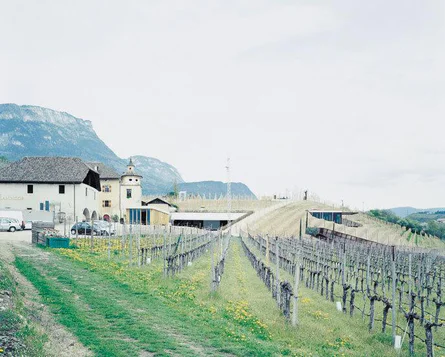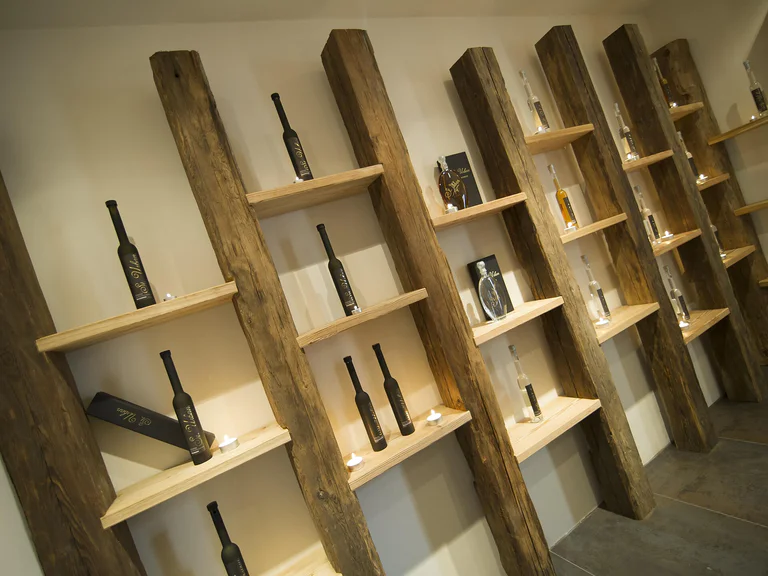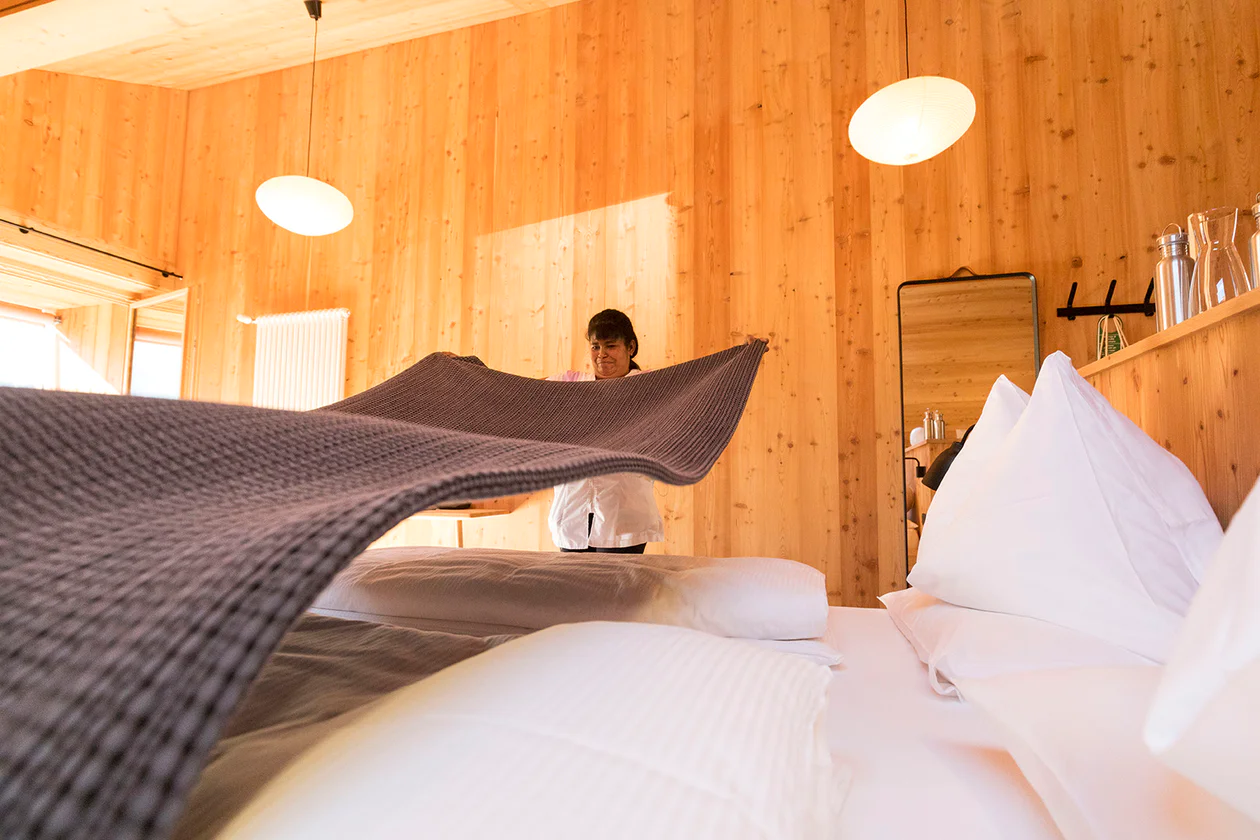Between Caldaro/Kaltern and the lake lies a vineyard landscape with beautiful residences, including Manicor’s Renaissance structure. Because its new wine cellar, with a cubic capacity of 30,000 cubic meters, would have severely intruded upon this landscape, it was built underground. Only the wooden sales pavilion was added to the previously existing ensemble. The cellar appears only through the entrances and the glass “eye” of the tasting room, which affords views across to Leuchtenburg Castle. Rows of vines further cover the underground facility. A carefully formed concrete construction with building elements made of Corten steel was placed between sprayed concrete walls in the tempered ground. In this way a uniform climate for sustainable architecture has been ensured, which focuses on the gentle processing of grapes according to the tenets of biodynamic viticulture.










































































































